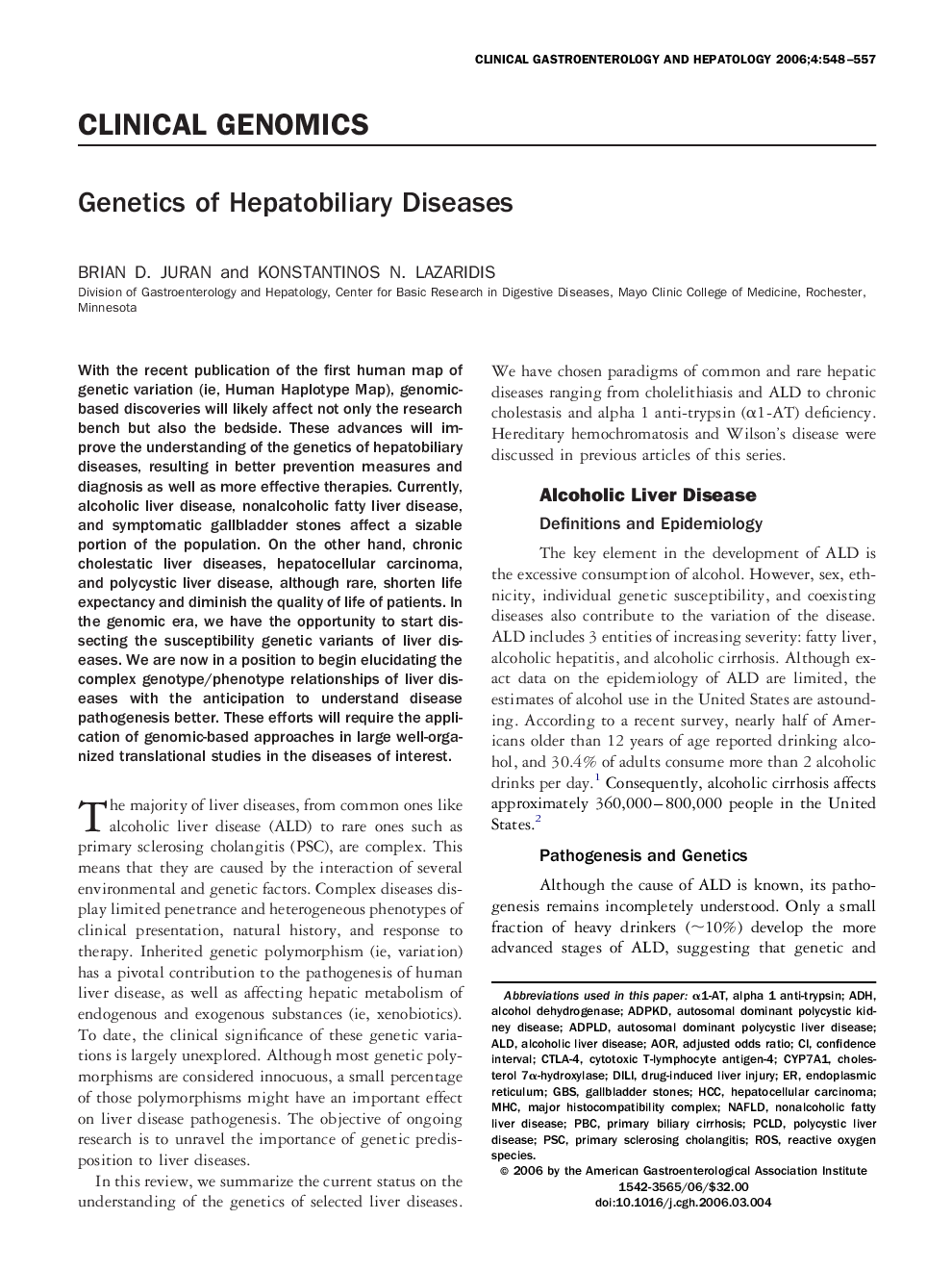| Article ID | Journal | Published Year | Pages | File Type |
|---|---|---|---|---|
| 3285801 | Clinical Gastroenterology and Hepatology | 2006 | 10 Pages |
Abstract
With the recent publication of the first human map of genetic variation (ie, Human Haplotype Map), genomic-based discoveries will likely affect not only the research bench but also the bedside. These advances will improve the understanding of the genetics of hepatobiliary diseases, resulting in better prevention measures and diagnosis as well as more effective therapies. Currently, alcoholic liver disease, nonalcoholic fatty liver disease, and symptomatic gallbladder stones affect a sizable portion of the population. On the other hand, chronic cholestatic liver diseases, hepatocellular carcinoma, and polycystic liver disease, although rare, shorten life expectancy and diminish the quality of life of patients. In the genomic era, we have the opportunity to start dissecting the susceptibility genetic variants of liver diseases. We are now in a position to begin elucidating the complex genotype/phenotype relationships of liver diseases with the anticipation to understand disease pathogenesis better. These efforts will require the application of genomic-based approaches in large well-organized translational studies in the diseases of interest.
Keywords
α1-ATCTLA-4CYP7A1NAFLDcytotoxic T-lymphocyte antigen-4ADPLDAORPCLDADPKDPBCADHPSCGBSHCCROSALDDrug-induced liver injuryAlcohol dehydrogenasealcoholic liver diseasepolycystic liver diseaseautosomal dominant polycystic liver diseaseNonalcoholic fatty liver diseaseautosomal dominant polycystic kidney diseaseDILIGallbladder stonesPrimary biliary cirrhosisendoplasmic reticulumconfidence intervalmajor histocompatibility complexMHCadjusted odds ratioHepatocellular carcinomaPrimary sclerosing cholangitischolesterol 7α-hydroxylaseReactive oxygen species
Related Topics
Health Sciences
Medicine and Dentistry
Gastroenterology
Authors
Brian D. Juran, Konstantinos N. Lazaridis,
